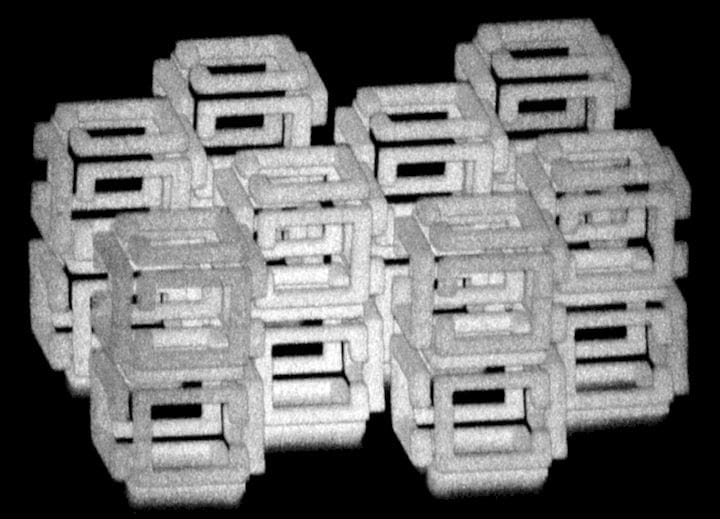![A microscopic 3D print using a new process called “ImpFab” [Source: Science ]](https://fabbaloo.com/wp-content/uploads/2020/05/shrink-ov_result_img_5eb0a078c630d.jpg)
A research team has developed an unusual method for 3D printing small scaffold-like structures.
Their new 3D printing process is called “Implosion Fabrication”, or “ImpFab”.
After reading their paper and understanding their approach, I think the best way to explain their process is to recall those child’s toys that expand when soaked in water, like this “hand”:
In the video, a small plastic hand expands 600% when placed in water. That’s essentially what’s happening with this new process, except in reverse.
The researchers found that if they 3D printed a structure in polyacrylate, a material known to soak up liquids, they could then shrink the structure by using a several-step process, ultimately exposing it to an acid.
The hydrochloric acid (or magnesium chloride in some trials) shrunk the polyacrylate structure in linear factors ranging from 10 to 20 times over a period of hours.
![The ImpFab process overview [Source: Science ]](https://fabbaloo.com/wp-content/uploads/2020/05/image-asset_img_5eb0a07932b3d.jpg)
They also found that they could use the polyacrylate gel as a substrate to deposit a wide variety of materials, including “small molecules, bio-molecules, semiconductor nanoparticles, and metal nanoparticles”.
Now this sounds quite interesting; this could be another way to 3D print very small metal or conductive 3D objects.
They say the resolution of the objects produced with ImpFab is in the range of “tens of nanometers”, which is extremely small, literally 1000x smaller than most typical 3D printers’ resolution.
I’m certainly making this sound quite straightforward, but from reading their paper it appears they had countless technical challenges to make this system work. For example, shrinkage was not uniform across all axes. Considerable chemistry was required to make their example tests work correctly.
The researchers say they were able to create objects that were up to “millimeters” in size, but envision larger versions of the system to be able to produce “centimeter-scale nanomaterials” in the future.
It seems to me that this is a fascinating process that will require additional work to enable it to be commercialized, and I’m sure they will be working towards that end.
Via New Scientist and Science











A research thesis details the incredibly complex world of volumetric 3D printing. We review the highlights.